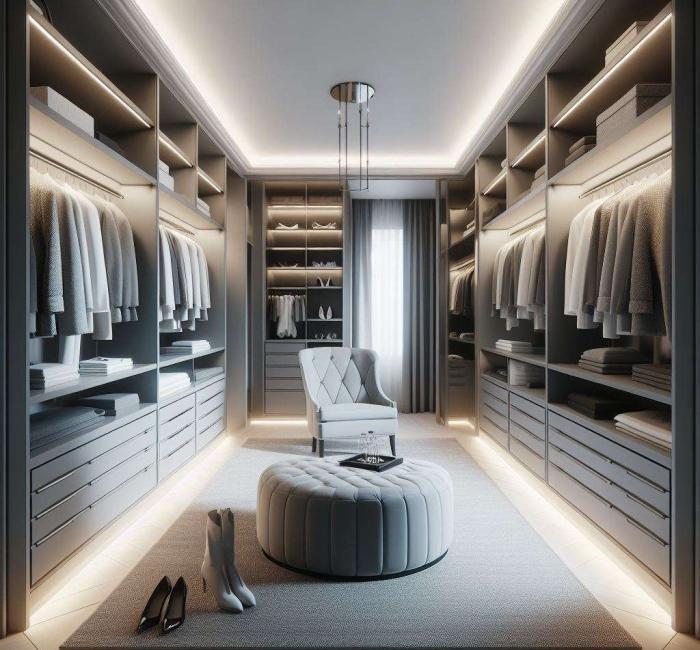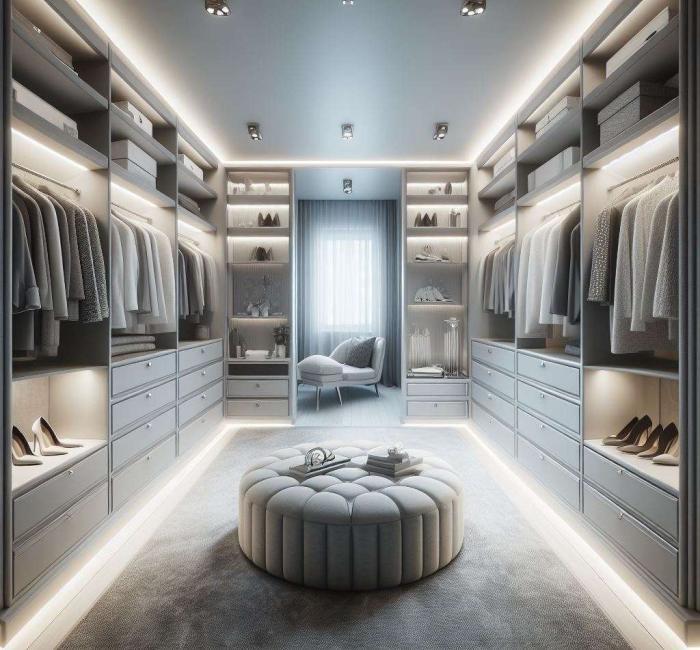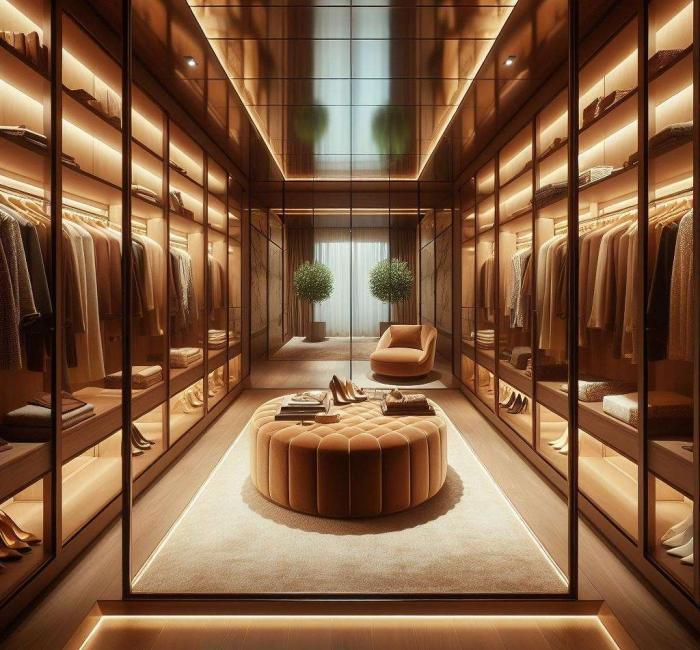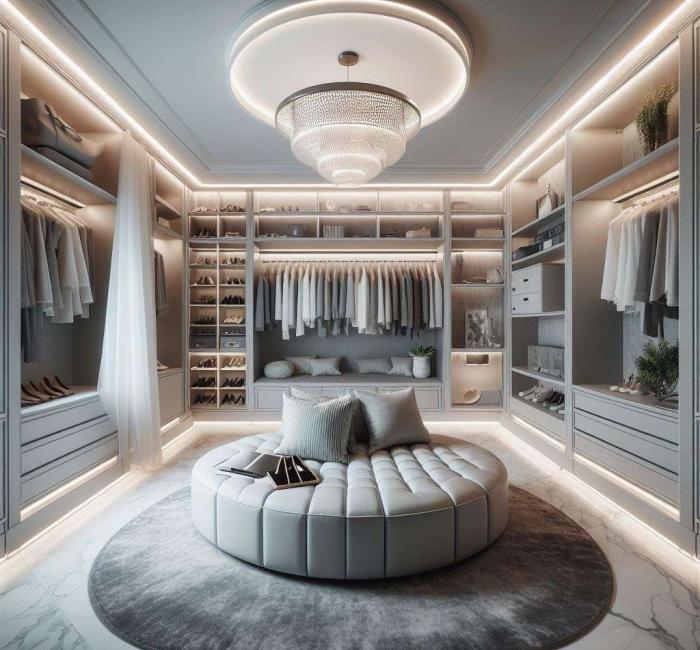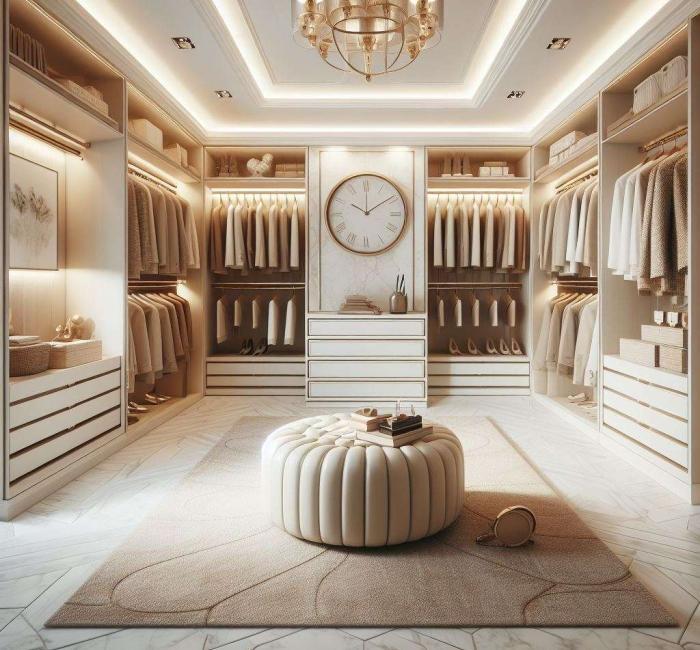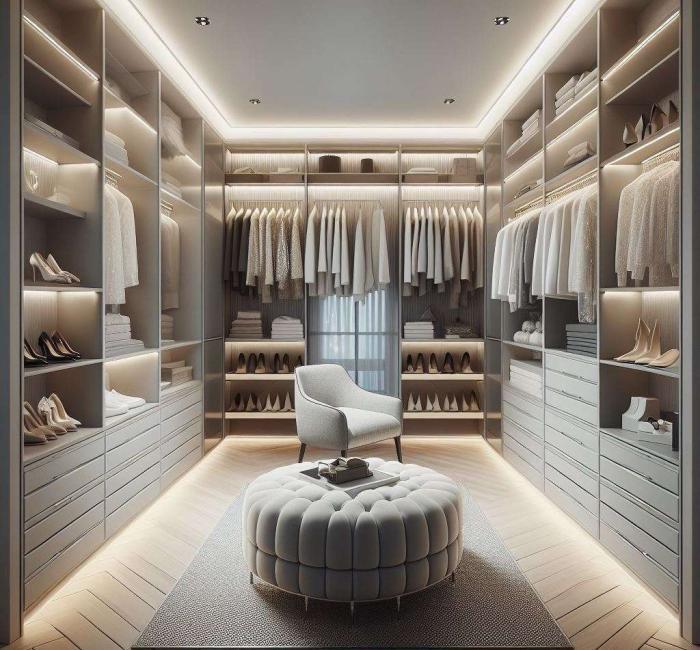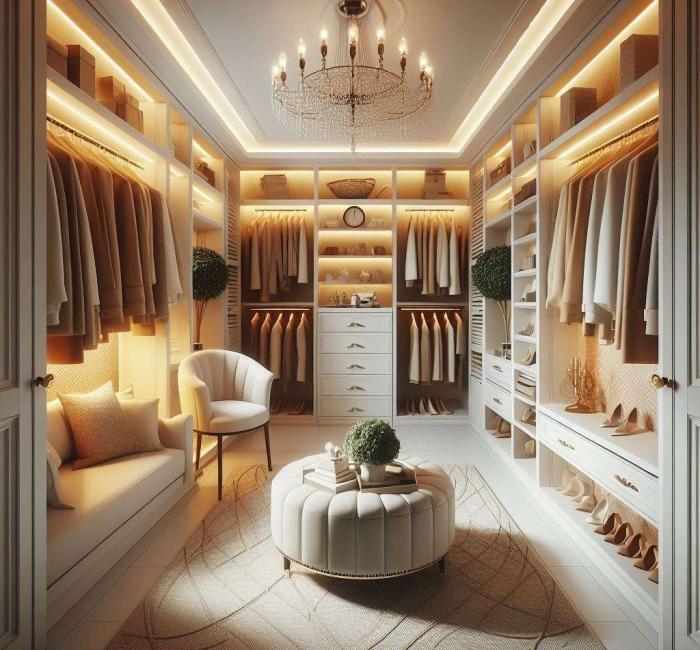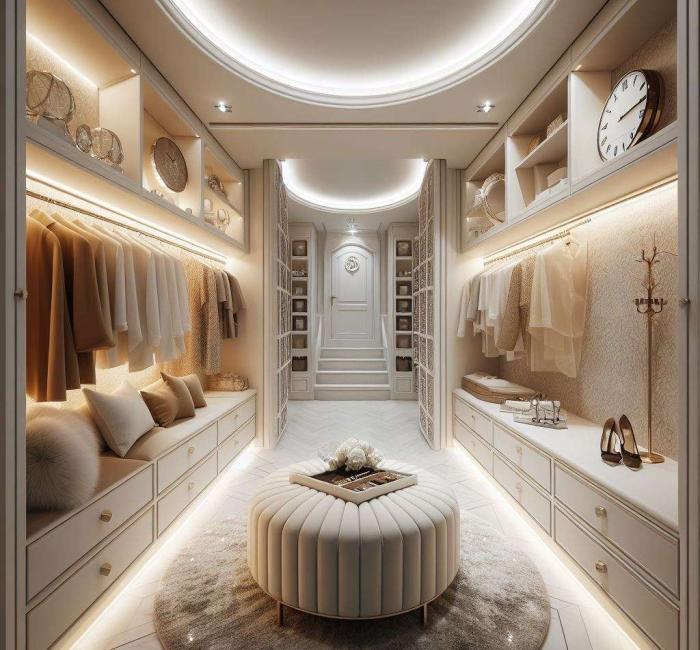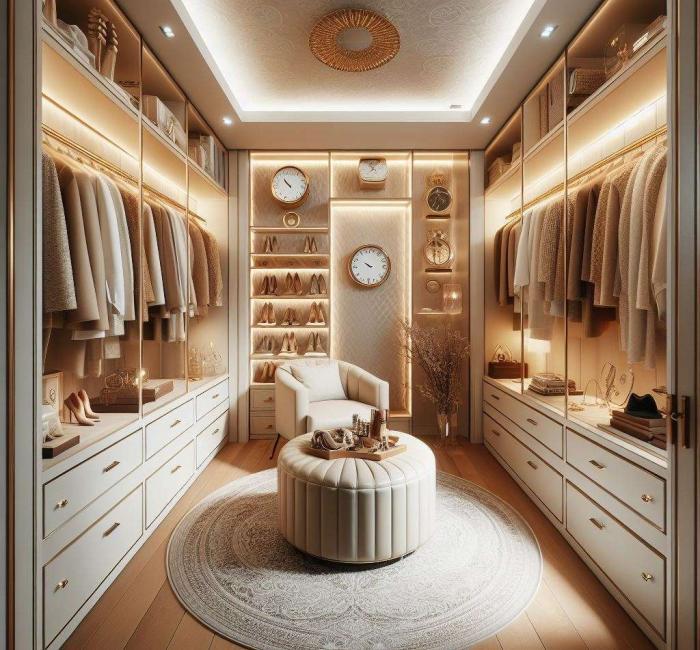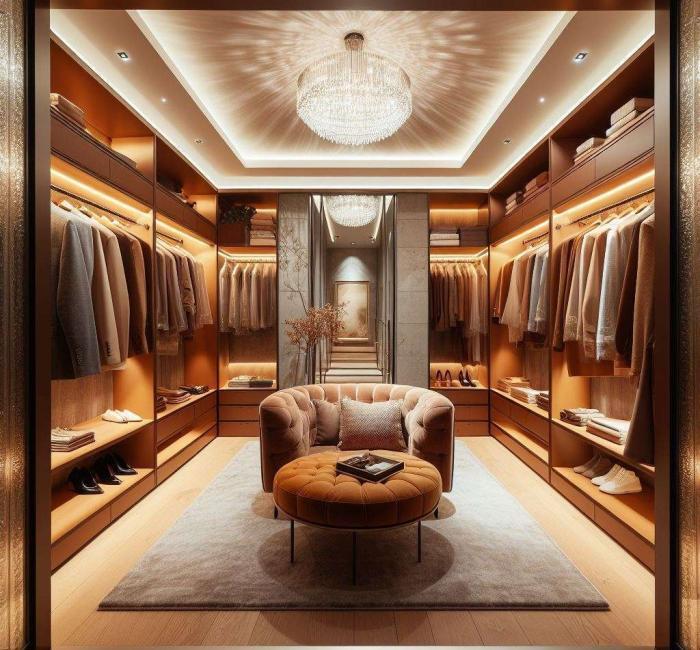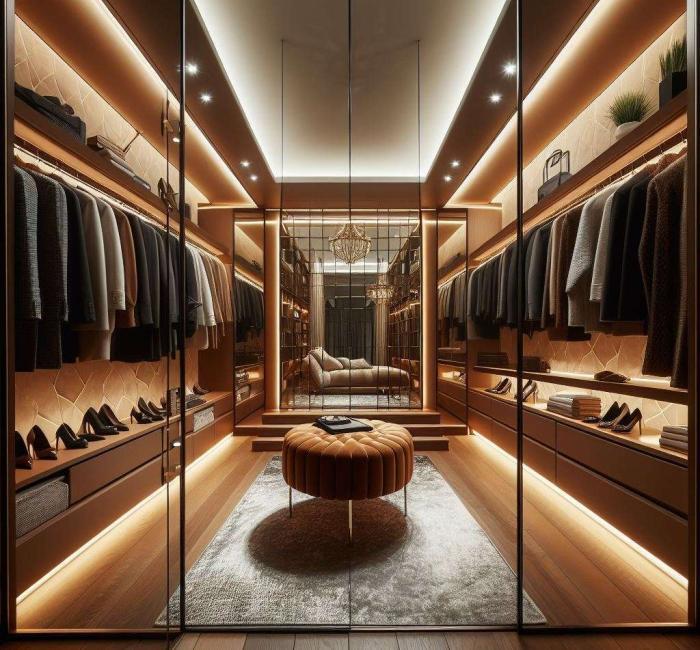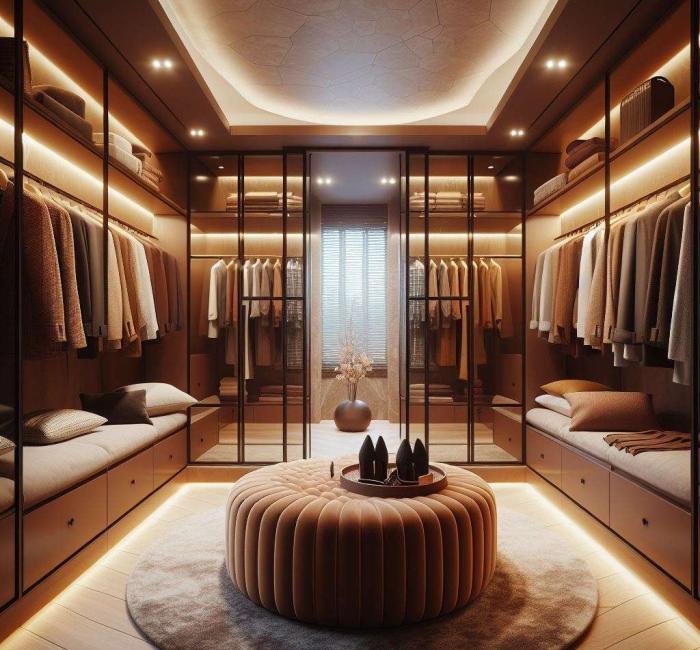AI Based Design
Dressing Room Design
The design of a dressing room is an intriguing way to combine style and functionality to create a space that is not only practical but also aesthetically pleasing. Here are some aspects that are important when designing a dressing room:
- Space optimisation: Maximize the available space through smart room layout and organization. Built-in shelves, drawers, and custom-made cabinets help neatly store clothes, shoes, and accessories.
- Lighting: Make sure you have effective lighting to illuminate the room well. Combine bright, natural lighting with targeted artificial light sources to create a comfortable atmosphere.
- Mirror: Incorporate generous mirrors to make it easier to try on and give the room a sense of space. Some mirrors could also adorn cabinet doors to combine functionality with aesthetics.
- Palette: Choose a color palette that opens up the room and creates a relaxed atmosphere. Light, neutral tones are popular, but can be paired with accent colors or patterns to add character to the room.
- Furniture and fittings: Opt for furniture that is not only functional, but also in line with the overall design. Comfortable seating, an elegant dressing table or decorative hooks for accessories can add a luxurious touch to the room.
- Classification systems: Rely on efficient organization systems to keep clothes and shoes organized. Categorize storage as needed and integrate solutions such as drawer inserts and compartment systems.
- Personalization: Add personal elements that make the space a welcoming and individual place. Photos, artwork or decorative objects can add a personal touch.
- Carpets and textiles: Incorporate soft rugs or rug runners to add warmth to the room. High-quality textiles in the form of curtains or seat cushions can provide additional comfort.
- Room separation: If the room is large enough, a room partition could demarcate the dressing area and give it a private atmosphere.
- Technological Integration: Consider integrating technology, such as automatic lighting systems or smart cabinet systems, to maximize comfort and functionality.
By taking these aspects into account, you can create a dressing room that is not only functional, but also an aesthetic and personal refuge for daily preparation.
